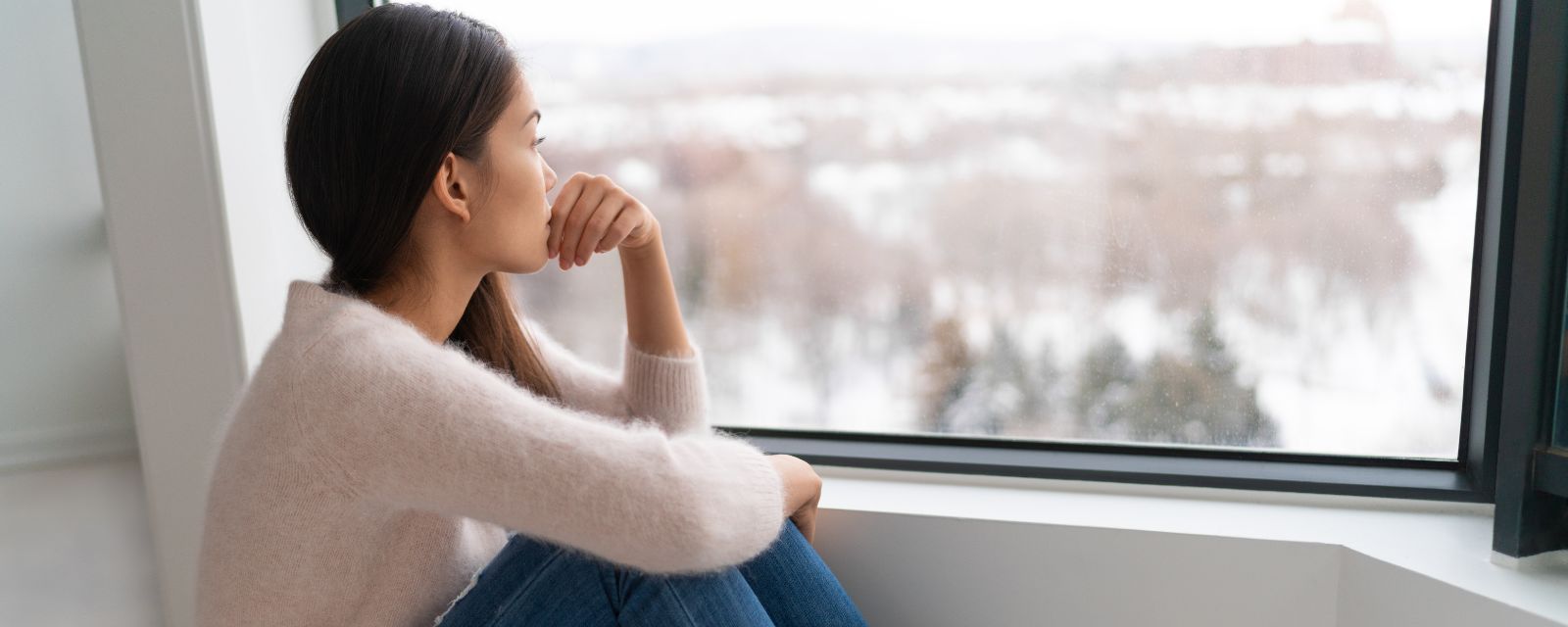Views on Mental Health & Traditional Beliefs in Chinese Culture
While efforts have been made to raise awareness for mental health needs and accessibility, normalizing conversations, and addressing stigmas in Western culture, there are still many views from other cultures that impact the importance of supporting mental health and mental illness. As such, many communities continue to experience barriers in seeking support and accessing services. Within our own Chinese community, while work is happening to raise positive awareness of mental health support, our personal experiences and stories have informed us that there is still much to be discussed about its importance.
Growing up, we were taught that the important things to worry about in our lives were achieving academic and professional success while caring for our family of origin and developing a family of our own. Everything from hobbies to social activities were all carefully chosen by our parents growing up and geared toward achieving professional and academic success, regardless of personal interest. Admittedly, there were benefits to having this type of structure, but at what cost?
The expectation of success from our families and fear of bringing shame because of failure would often entail emotional and mental stress often unaddressed in terms of coping. Not to mention the added complication of navigating personal interest and forming a sense of identity in adulthood with little experience in decision making up until that point. With everything seemingly panned out by our caregivers, we were also inadvertently taught that addressing our own issues and concerns were deemed a sign of weakness and should be dismissed.
What then, could we have done differently to address our mental health concerns like stress and anxiety? Many of our concerns were addressed in the context of cultural misconceptions and different views that we may be more accustomed to.
Myths Within the Culture
Common myths and misconceptions about seeking mental health services from the Asian American community have affected the outcome of actually seeking professional support. A 2009 study has found that familial and cultural pressures have also influenced the discouragement of seeking services in order to obligate the pressures of being successful academically and professionally. This in turn has led many within the AAPI community to turn away from the possibility of seeking help.
Many of these myths have centered around the idea that being in therapy automatically means that one is crazy or “possessed”, as common examples. More practically, within the Chinese culture itself, seeking help from an outside source can be viewed as bringing shame or embarrassment to one’s family for the individual not being able to have a better grip of themselves.
As we continue to focus our effects on raising awareness to the Chinese community and addressing mental health needs, we have decided to focus specifically on several crucial views towards mental health and traditional beliefs in Chinese culture. These views are not only just a fraction of what is understood within the culture, but it should also be noted that these items also affect members of the community on many levels.
Mental Illness Considered as Ghost Haunting or Higher Punishment
The topic of mental health, when discussed, was often negative. Stories about people in the community with now obvious mental health concerns were falsely disguised through the lens of cultural myths.
During childhood, discussions and expressions of emotions were not encouraged. Emotions were often viewed as weaknesses and explained in terms of shame. For example, feelings of sadness have been explained to be self-inflicted because the person “must have done something bad to be punished with this feeling”. Mental health concerns, when discussed, were often explained in that manner.
For example, there was a story circulating Chinatown, Chicago about a girl who refused to eat and eventually passed away. Endless efforts, including: praying, acupuncture, utilizing herbs, and providing offerings to spirits, from family and friends were unsuccessful. It was explained that the family of the girl must have done something bad in a previous life and were being punished by a higher power. Others rationalized the situation with the belief that evil spirits were preventing the girl from eating and that she was no longer acting at her own free will.
Some might conclude that stories like this one were told as a scare tactic to ensure good behavior of children and some may find that this story was told in order to make sense of an unfamiliar situation, such as an eating disorder. Depending on the belief that one may hold, it may influence their decision to consider seeking mental health services such as therapy. As we know, our attempts of treatment often stem from our understanding and core belief of the issue at hand. Someone that holds a firm belief that mental health issues are caused by evil spirits or personal wrong-doings may find it difficult to see the benefit of seeking mental health services such as therapy. This is further discussed in the book “Chinese Religious Life, pp 93-96”, which outlines different Chinese beliefs about mental health issues and the differing methods of treatment.
From a 2002 study regarding cultural factors for seeking mental health support in Asian Americans, the table in this link also shows some of the beliefs and proposed methods of treatments related to mental health issues:
https://www.ncbi.nlm.nih.gov/pmc/articles/PMC1071736/table/tbl2/?report=objectonly
Mental Health and Bringing Shame to the Family
Born within Chinese culture, we were taught to focus on the emotion of shame and understand its significance in how our actions in everyday life can affect not just those around us, but the perceived reputation of our families. Culturally, good social standing within the community has high value and pride in terms of family values. While shame affects families, individuals, and communities of many cultures, Asian American communities place a higher stance on shame and as a result are more reluctant to discuss issues related to mental health.
Additionally, there are also issues within the “model minority” myth that may have an effect on how personal problems, and by extension, mental health, is perceived. The notion that many Chinese American families have successfully integrated into Western culture, overcome pitfalls, and “played by the rules” can be seen as a success story. However, this not only denies the existence of systemic and racial injustice still prevalent in the community but also the need to address personal needs such as seeking treatment or mental health support if needed. This would also encourage the hiding of many struggles members of the Chinese community still face.
For many, admitting to having problems with their mental health would not only be seen as a perception of weakness, but also disappointing the community as a whole as a strong view within Chinese culture is to be seen as one with the community and able to care for others, especially family, effectively. More to the point, a 2011 study regarding Asian American mental health also suggested that the topic of mental health and utilization of services is typically avoided because it could result in public knowledge of family based difficulties, and a highly vulnerable admission of the issues’ existence.
Losing Face
Within Chinese culture, the concept of shame is connected to another concept of “saving face”, or mian zi. Essentially, it is the ability to preserve your public image and the image of your family within the community. For many, disclosing personal issues such as mental health concerns can affect views of family lineage, suitability as a spouse, or even employment status. While saving face may have a perception of keeping oneself held in high regard, this current discussion about one’s mental health or lack thereof might do more harm than good. Such that not being able to address detrimental issues such as depression can lead to risks towards proper functioning in life and even suicide; which according to Mental Health America, has seen an increase in suicidal thoughts, plans and attempts in 2018 compared to 2008.
If someone in the Chinese community were experiencing symptoms of depression or having suicidal thoughts, for example, a typical cultural norm might be to hide these concerns away in order to maintain the ideal image of the “model minority”. Here then also lies the concern that needing to hold up to the standards of such a myth can lead to high expectations and anxiety. Should an individual experience depression or suicidal thoughts, the cultural norm would suggest that their life is not being controlled properly and is unable to achieve success, leading to the concept of losing face within the family and community.
Closing Thoughts
With stigmatization, varying views and beliefs, and shame being important areas of concern within the Chinese community as shown in both studies and personal experiences of the writers, the need for awareness about seeking mental health support then becomes more prevalent. More and more, we are seeing the need for services grow because of the continued emotional traumas, stigmas, and violence that affect the Asian American community as a whole. Though cultural viewpoints might deter many from seeking support from what is considered an outside source, many are also of the belief that being able to have a safe space to have conversations about the internal traumas that are affecting one’s life is just as important as finding success or playing off the idea that everything is okay.
While there may be some time before the entirety of mental health stigmatization is completely dispelled within the Chinese community, this is not to say that the work being done is lacking in any way. There are also many within the community that have advocated for the support of one’s mental health. Similarly, public information has also allowed for increased awareness of its importance, fighting the stigma and encouraging the need for seeking help.
Additional Readings
Our blog post: Demystifying Psychotherapy
All material provided on this website is for informational purposes only. Direct consultation of a qualified provider should be sought for any specific questions or problems. Use of this website in no way constitutes professional service or advice.




